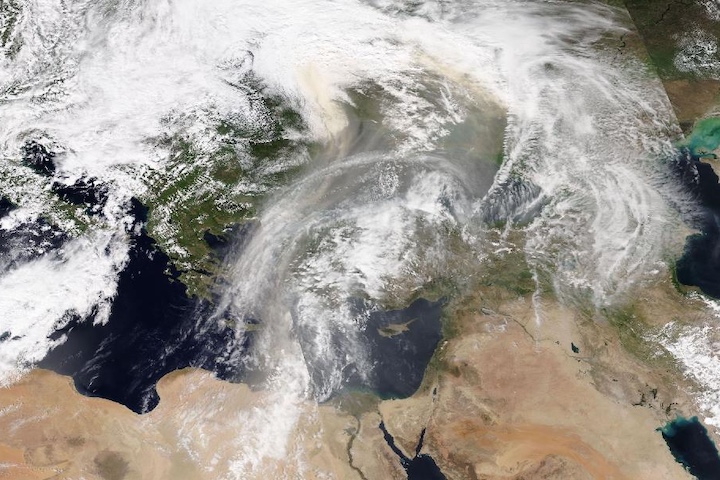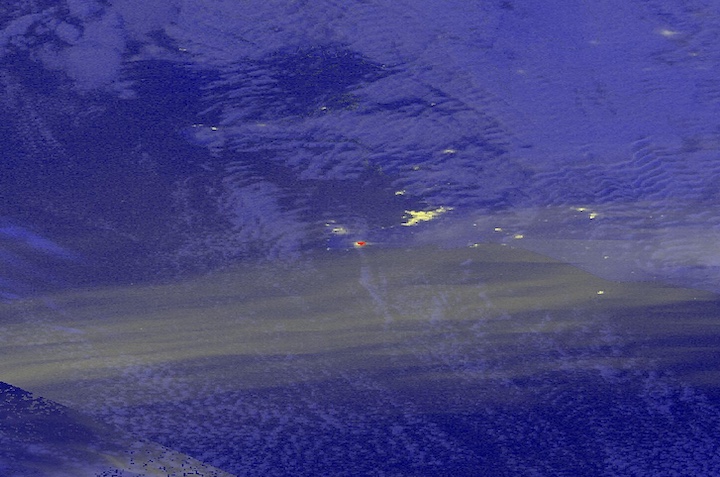True-color corrected reflectance image overlaid with a layer showing high chlorophyll a concentrations off the coast of California on May 8, 2024 (indicated in colors of red/dark red). This layer provides the near-surface concentration of chlorophyll a in milligrams of chlorophyll pigment per cubic meter (mg/m3). The image was acquired by the Ocean Color Instrument (OCI) aboard the Plankton, Aerosol, Cloud, ocean Ecosystem (PACE) satellite.
High chlorophyll a concentrations appear off the California coast due to coastal upwelling. Coastal upwelling occurs when deep ocean water is pushed to the surface. This nutrient-rich water is a key food source for phytoplankton. High chlorophyll a concentrations are an indicator of areas with abundant phytoplankton.
The PACE satellite launched on February 8, 2024. Along with the OCI, the spacecraft also carries the Spectro-Polarimeter for Planetary Exploration (SPEXone) and the Hyper Angular Research Polarimeter (HARP2). OCI, PACE's primary instrument, is an optical spectrometer that measures the intensity of light over portions of the electromagnetic spectrum. SPEXone and HARP2 are multi-angle polarimeters used to measure how the oscillation of sunlight within a geometric plane (known as its polarization) changes as it passes through clouds, aerosols, and the ocean. Measuring polarization states of UV-to-shortwave light at various angles provides detailed information about the atmosphere and ocean, such as particle size and composition. PACE acquires global data every two days at a spatial resolution of 1.2 km.
Visit Worldview to visualize near real-time imagery from NASA's EOSDIS; find more imagery in our Worldview weekly image archive.



